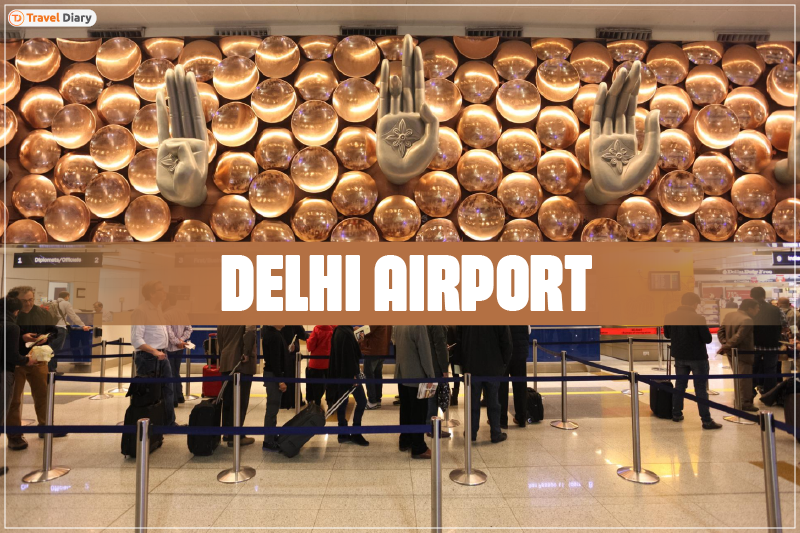April 18 (Punjab Khabarnama) : Delhi Airport, largest airport in the country, has reached a new high. The airport has jumped seven places from pre-COVID to post-COVID entering the top 10 airports club at the 10th position as per the Airports Council International (ACI). While the ACI rankings were based on calendar year data, the airport itself, like most other authorities in India, bases its results on the financial year.
Delhi saw 73.67 million passengers in FY24, shows the data released by GMR Airports and Groupe ADP which has a stake in GMR Airports. This has made it the jewel in the crown for Groupe ADP – which operates some of the most renowned airports in the world and has a 49% stake in GMR Airport arm, which in turn operates Delhi Airport via the subsidiary Delhi International Airport Limited (DIAL). At 73.67 million passengers, Delhi has recorded more passengers than Paris CDG, the flagship of Group ADP and the hub of Air France. Paris CDG reports passengers on a calendar year basis and in 2023 saw 67,421,316 passengers. Delhi on the other hand saw 72,214,841 passengers in 2023. Paris CDG is yet to recover to pre-COVID numbers while Delhi has grown 5% compared to 2019, even while it hosts over 50 grounded planes leading to loss of possible departures.
Delhi has consistently maintained over 6 million passengers per month mark for the entire last financial year, when it wasn’t really fully ready in terms of infrastructure to handle this kind of traffic. While the expansion of the airport was inaugurated a few days before elections were announced, all the areas are not yet operational. The airport has seen split operations by carriers across its three terminals when it had to operationalise the defunct Terminal 2 for expansion of T1. When the new T1 is fully operationalised, the airport is likely to see the shift of services to T1 for all airlines who are in T2 presently. This would also mean that all international services will be from T3, along with the domestic services of Tata group of airlines – viz. Air India, Vistara, Air India Express and AIX Connect (erstwhile AirAsia India).
Four runways, two terminals and a 100 million passengers
The airport also operationalised its fourth runway along with India’s first elevated taxiways as part of the expansion plans. When multiple runway operations start full fledged, along with the availability of fully renovated T1, the only limit that the airport has to expand is the ATC capacity – for which it is dependent on the state owned Airports Authority of India. If the ATC can increase the movements from its current peak of 86 movements an hour, it will mean a huge leap for the passenger count as more movements mean more passengers.
The expanded T1 can cater to more flights of IndiGo, which has been growing rapidly and at the same time freeing up terminal space in T3 for expansion of Air India Express and Air India – which have equally rapid expansion plans.
Atlanta is the only airport in the world which recorded over 100 million passengers in 2023. Assuming that Delhi is ready with this capacity, the utilisation is roughly 74% currently. At a growth rate of 10%, the 100 million mark is possible towards the end of 2026, but at 7% the 100 million mark will be crossed in 2029.
These numbers justify the need for the new airport at Jewar, which has been named Noida International Airport. While the airport remains the necessity of going by numbers, it also means that some traffic from Delhi could be diverted to Jewar and the growth could moderate. This is both good and bad news. Good because it possibly pushed Delhi up to a more premium offering, giving good returns to GMR on its investments and bad because an idle airport is something which no one fancies.
Transfer issues remain unsolved
While most airports ahead of Delhi in the list have multiple terminals, they also have just one strong hub carrier unlike Delhi or have seamless transfers within secure areas – again unlike Delhi. The plan to interlink Terminal 1 and Terminal 3 along with possibly a future Terminal 4 has been stuck in a limbo for multiple issues starting with who will fund it and if it should be a secure link or one which extends to the public. A secure link which ensures passengers transfer from sterile areas would help avoid repeat security, provided the proposal is accepted by BCAS (Bureau of Civil Aviation Security), which going by current rules looks unlikely.
IndiGo, the largest airline in the country, has its largest presence at Delhi. Passengers travelling on IndiGo to foreign shores via Delhi will need a longer layover at Delhi, as compared to the Tata group airlines since the IndiGo passengers will have to change terminals, while the Tata group airlines are all under the same roof at Terminal 3. Longer connection times makes flight options less lucrative. This also impacts the various interline and codeshare partnerships which IndiGo has signed with foreign carriers over the years.

